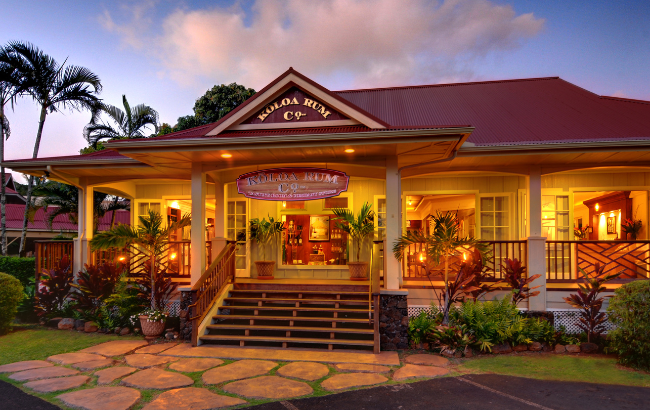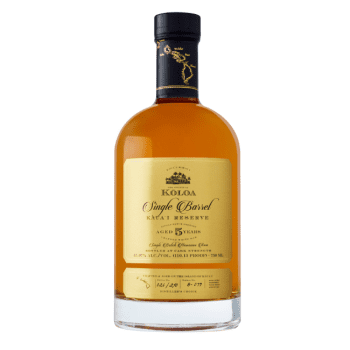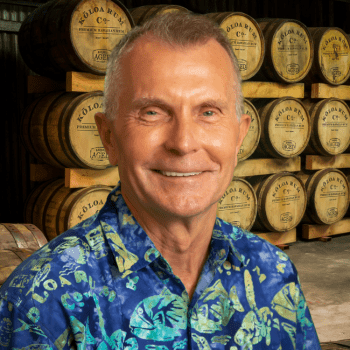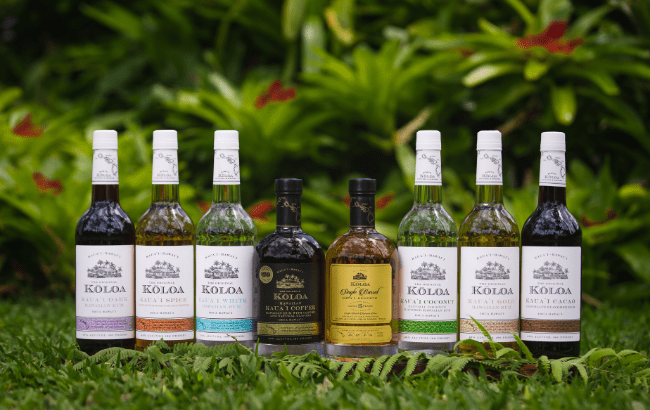Kōloa to focus on aged rum
By Rupert HohwielerHawaii-based Kōloa Rum’s president and CEO, Bob Gunter, spoke to us about new product development and why aged rum will be a focal point for the company going forward.

Situated in Hawaii, in Kalaheo, Kauai to be exact, since its start in 2009 Kōloa has produced a broad spectrum of rums; from flavoured variants with local ingredients such as coconut and coffee to gold and white rum. A jack of all trades in rum production, perhaps.
And while finding new flavours to keep the portfolio fresh and relevant is still high on the priority list for the company, founder Bob Gunter shares particular excitement for its aged rum and the “twists” that he can build from this expression.

“I think going forward that while yes, we’ll always do the flavours and try to give consumers what they like and appreciate, we’re really going to be focused more on our aged rum and we’re excited about that part of our business going forward,” he told The Spirits Business. “There are a lot of different things we can do with that in terms of different finishes.”
Currently, the brand’s sole aged rum – The Original Kōloa Kaua’i Reserve Aged Rum – stands at five years and is bottled at cask strength, but Gunter is looking to add a second, older expression at seven years, maybe even 10 in the near future, while lowering the ABV of the original.
He explains why: “As we age as a brand, our aged rum continues to age as well. Up until now, the aged rum expression that we’ve offered is a five-year single barrel cask-strength aged rum. On occasion, 120 proof (60% ABV) is a little too high for some people and also a little more expensive, so we’re going to lower the ABV for the five year to 92 proof (46% ABV) and put that on the market and then our cask strength is going to graduate to seven years.”
He also shared excitement on how ageing in a tropical environment such as Hawaii will intensify the spirit’s profile with the further ageing, adding: “I’ve always heard that ageing here is accelerated because it’s warm predominantly, more so than in some other climates. And so the alcohol in the barrel stays in an expanded state pretty much continuously.
“The impact of what the wood imparts is really more pronounced, especially now that we’re doing seven years, and we even have a couple barrels that are 10 years (though we don’t have enough volume yet to release). We’re just super excited about what we’re getting from the barrels.”
Plans for new products
Even if ageing is Kōloa’s main focus, there’s still plenty more coming from the brand by way of new products, which Gunter is open about. “We don’t know what’s going to appeal to the next consumer walking down the aisle, but our beverage development team is very good at what they do”, he says.
“If we have something that’s unique, that can complement what bartenders are doing or wanting to create, then I think that’s where our opportunity is. We’ve got some things in the pipeline we’re working to get to market.”
These include a hot cinnamon rum and more ready-to-drink (RTD) variants. Of the former, he compares it to the genre of cinnamon-flavoured whisky liqueur Fireball, but “a lot better and a little higher proof at 40% ABV”.

“It will be made with locally-grown Hawaiian cinnamon, which ties us to Hawaii – part of our story, our authenticity and our connection with the land. That is really important. We have to be very measured, though, in terms of new product releases because the market can only accept so much at one time or within short succession.
“We have to first sell to distributors, who then have to get it into their system – and then sell it to the retailers and introduce it to the public. There’s a process to that.”
As the alcohol beverage space has softened in the past years, Kōloa has developed a more conservative approach to expansion, both overseas and in the US.
Observing this, Gunter states: “We want to make sure that we maintain, first and foremost, the quality of our products, but we don’t get to spread too thin that we’re not able to service the markets and the accounts that we have, and that we don’t spend above and beyond our means.
“If we were one of the major global brands with endlessly deep pockets, with resources that we could throw at it, we would. But by nature, we’re still a small emerging brand and so we have to be very careful with how we conduct ourselves.”
Moreover, if you noticed a gap between the five and seven-year aged rums, there’s a reason for that, as Gunter explains. “Where’s the six year? Well, we’re doing a collection of commemorative releases to support financially and call out various partnerships and organisations that we feel have a relationship with. We will soon release a commemorative bottle, a six-year aged rum in support of Purdue University, which is one of our premier universities in the US, located in Indiana.
“It’s all about keeping our brand front of mind, visible and letting people know that we’re active.”

Flavours still attractive
Flavoured rums, which the brand somewhat specialises in, still have an important role to play in the brand’s portfolio. When Kōloa was founded, other than Captain Morgan with its spiced rum and perhaps Malibu, there wasn’t much happening with flavoured spirits, putting the brand on the leading edge of this segment.
The Tahitian vanilla-forward dark rum is still the brand’s number-one seller – used not just for sipping, but in cooking (“we have a baker in Hawaii that makes an amazing rum cake, using our dark rum”, Gunter enthuses) – but the spiced rum is right up in there in popularity too, as is the coffee rum (made from a cold brew in the distillery and blended with the white rum), another favourite in the coconut rum, and a cacao rum, made with locally-grown cacao beans that macerate in the rum for 10-12 days.
“It’s a true chocolate rum, and that’s been a big hit. We found that mixologists are finding very unique ways to use these flavours in cocktails without having to add a lot of extra unnecessary ingredients to get the flavour profiles that they’re looking for,” Gunter says of its popularity.
Gunter believes Kōloa’s style of rum – “very smooth, clean, light and sippable” – lends itself well to flavours. “It’s not an agricole or a heavy aged rum, which makes it much more challenging to add flavours to it.”
When asked about the negative perception that flavoured rums sometimes endure, Gunter quips: “I affectionately refer to those people as rum snobs.”
Speaking seriously on the subject though, he reflects: “I’ve heard from the beginning – from the rum purists – that if it’s flavoured, it’s not truly a rum. I get it, we have our bucket of different types of non-flavoured rums, including our various aged rum offerings, but we found that [in the past] we did a lot of previously with non-rum drinkers, who were attracted to our flavours and really took a liking to them. And we thought ‘well gee, that’s a segment of the market and the buying public’.
“If you will, that was untapped before. We found that if we were winning over converts, new fans and brand ambassadors because of the different flavours. And so when it comes down to it… give the consumers what they’re asking for or what they respond to.
“To me, that’s the fun of it, and that’s where we get our satisfaction – is turning on people to these flavours and having them become lifelong fans.”
Related news
World Spirits Report 2025: Rum
